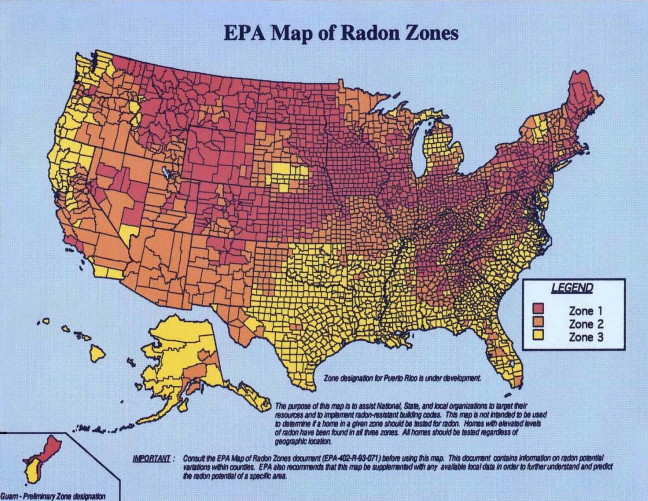
Radon
Contact UsTest Your Home for Radon: Protect Your Health
Radon is a naturally occurring radioactive gas and a leading cause of lung cancer in non-smokers. In fact, the U.S. EPA estimates that over 21,000 Americans die annually from radon-induced lung cancer. But what exactly is radon, why is it dangerous, and how can you test for it?
What is Radon and Why is It Dangerous?
Radon is a colorless, odorless, and tasteless gas that can accumulate in homes and buildings. When inhaled, radon undergoes radioactive decay in the lungs, releasing dangerous radiation that bombards lung cells. Over time, this radiation can cause lung cancer, making radon exposure a serious concern, especially for non-smokers.
How Do I Know If My Home Has Radon?
Because radon is undetectable by sight, smell, or taste, it’s essential to test your home. Thankfully, radon test kits are inexpensive, easy to use, and highly accurate. These kits typically involve placing a device in your home for a few days and sending it to a laboratory for analysis. Afterward, you’ll receive a detailed report of the radon levels in your home, along with recommendations on what steps to take next.
What Causes Radon?
Radon is naturally produced when uranium and radium, found deep within the soil, break down. As a gas, radon rises through the soil and can seep into your home. Modern construction methods, particularly those designed to improve energy efficiency, can trap radon inside. Sealed homes with poor ventilation are more likely to accumulate dangerous radon levels.
How Do We Know Radon is Dangerous?
Both the U.S. EPA and the Surgeon General have recognized radon as a leading cause of lung cancer among non-smokers. Numerous studies have consistently shown that prolonged radon exposure is hazardous to health. Classified as a class-A carcinogen, radon is a significant cause of radiation exposure in homes, making radon testing essential for every household.
Can Radon Levels Be Reduced?
Yes! If testing reveals that radon levels in your home are high, don’t worry. Radon mitigation is a straightforward and effective solution. Typically, this involves installing a ventilation system with a fan that draws radon from beneath your home and directs it outside. This process can usually be completed in a single day, helping to protect your family’s health.
Learn More About Radon
For additional resources, check out these trusted websites:
- EPA Radon Resources
- World Health Organization: Radon and Health
- National Radon Program Services at Kansas State University
At Eurofins Built Environment Testing, we offer reliable and comprehensive radon testing solutions to keep your home safe. Contact us today to schedule your radon test and take the first step toward protecting your home from this silent health threat.
Photo: US EPA, https://www.epa.gov/radon/epa-map-radon-zones-0
Request a Quote
Eurofins values your inquiries about our company, capabilities, and services. We are committed to assisting the industries that we serve to find the most cost effective and complete analytical solutions to meet your needs.
The information you provide will be used in accordance with the terms of our privacy policy.
